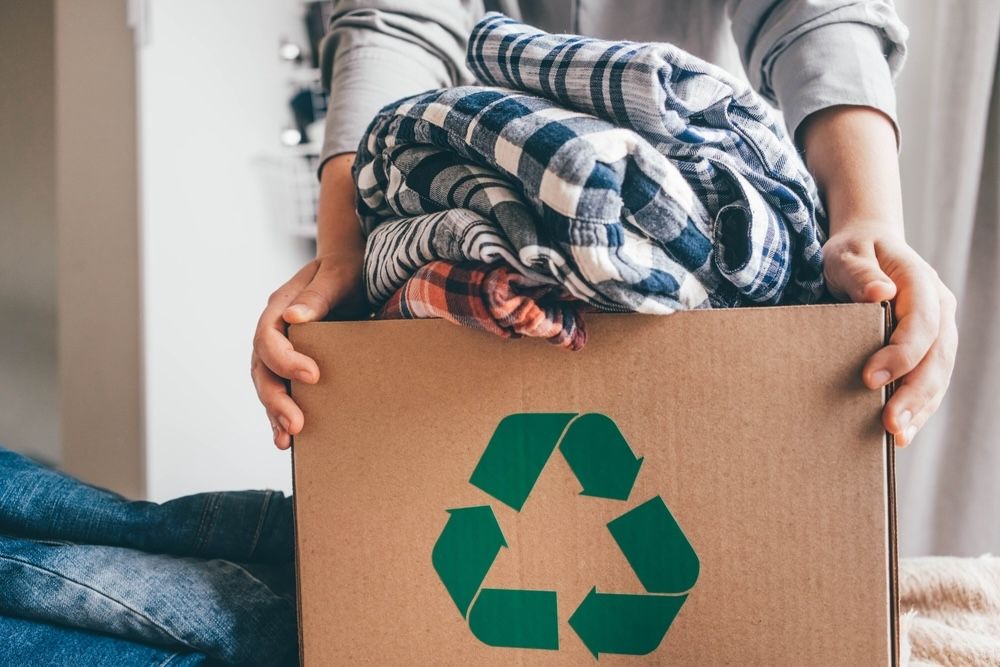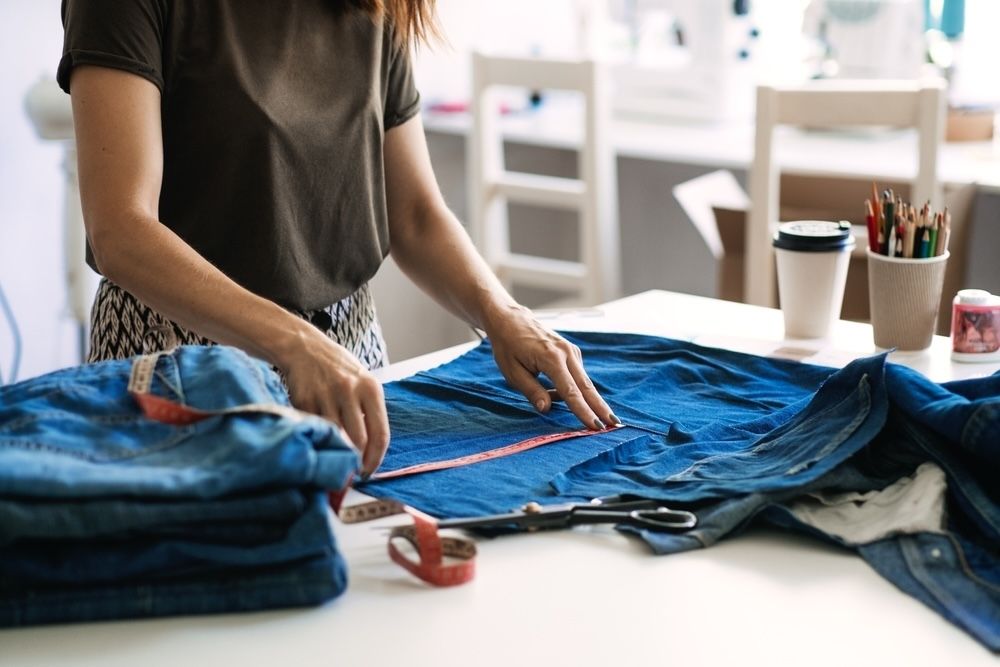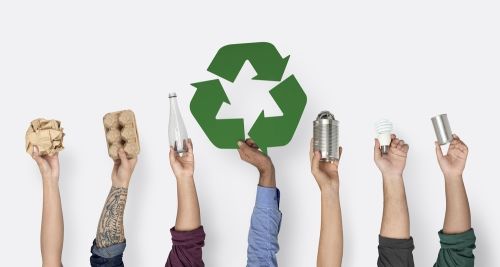How to Recycle and Repurpose Old Textiles: A Comprehensive Guide

As environmental awareness grows, many people are looking for more sustainable ways to manage their waste. One area that often goes overlooked is textile recycling and repurposing. From worn-out clothes to old sheets and towels, textiles are a significant part of household waste. In this article, we'll explore effective ways to recycle and repurpose old textiles, helping you reduce waste and contribute to a more sustainable future.
The Problem with Textile Waste
Textile waste is a growing problem worldwide, with significant environmental and economic implications. According to the Environmental Protection Agency (EPA), a staggering 85% of textiles in the United States end up in landfills each year. This translates to millions of tons of fabric waste contributing to already overburdened waste management systems. The production of textiles involves the use of various chemicals, dyes, and synthetic materials, many of which are harmful to the environment. When textiles are discarded and left to decompose in landfills, they release these harmful substances into the soil and groundwater, posing a severe threat to ecosystems and human health.
Moreover, textiles, especially those made from synthetic fibers like polyester, can take hundreds of years to decompose. As they break down, they release methane, a potent greenhouse gas that contributes to global warming. Additionally, microfibers from synthetic textiles can leach into waterways, impacting marine life and entering the food chain. The environmental footprint of textile waste is further compounded by the loss of valuable resources, as many discarded textiles could have been recycled or repurposed. Recycling and repurposing not only mitigate these negative environmental impacts but also conserve resources by reducing the demand for new raw materials.
Recycling and repurposing textiles offer a viable solution to this escalating problem. By diverting textiles from landfills, we can significantly reduce environmental pollution and greenhouse gas emissions. Effective recycling programs transform old textiles into new products, such as insulation materials, industrial rags, and even new fabrics. Repurposing, on the other hand, breathes new life into old items, turning them into functional or decorative pieces. These practices promote a circular economy, where materials are kept in use for as long as possible, minimizing waste and making better use of resources. By embracing these sustainable practices, we can tackle the textile waste problem head-on, creating a cleaner, healthier planet for future generations.

Textile Recycling: What You Need to Know
1. Understanding Textile Recycling Programs
Many communities now offer textile recycling programs designed to address the growing problem of textile waste. These programs typically accept a wide range of materials, including clothing, linens, and accessories. The collected textiles are then sorted based on their condition and type. Items in good condition may be sent to thrift stores or donation centers for reuse, while worn or damaged textiles are processed for recycling. The recycling process can involve shredding the textiles into fibers, which are then cleaned and re-spun into new yarn or used in industrial applications, such as insulation or soundproofing materials. Some programs also partner with brands and retailers to offer convenient drop-off locations, making it easier for consumers to participate. To find out if your community offers textile recycling services, check with your local waste management facility or recycling center. They can provide information on accepted items, drop-off locations, and any specific preparation requirements, such as removing non-textile components like zippers and buttons. Engaging in these programs not only helps reduce landfill waste but also supports the recycling industry, creating jobs and promoting sustainable practices.
2. What Can Be Recycled
Not all textiles are recyclable, but many common household items can be given a new life through recycling programs. Generally, clean and dry items without heavy stains or damage are ideal candidates for recycling. This includes:
Clothing: Shirts, pants, dresses, skirts, and other garments can be recycled, provided they are free of significant damage or stains.
Bedding: Sheets, pillowcases, blankets, comforters, and even mattress covers can be recycled. Ensure they are clean and dry before recycling.
Towels and Washcloths: Bath towels, hand towels, and washcloths are commonly accepted in textile recycling programs.
Curtains and Drapes: These larger fabric items can also be recycled, as long as they are not heavily soiled or damaged.
Shoes and Accessories: Belts, bags, hats, scarves, gloves, and other accessories, including shoes, can be recycled. Some programs may require you to separate different types of materials.
Table Linens: Tablecloths, placemats, and cloth napkins are often accepted by textile recycling programs, provided they are in good condition.
Fabric Scraps: Leftover fabric from sewing projects, including cotton, wool, and synthetic materials, can be recycled. Ensure the scraps are clean and free from contaminants.
Stuffed Animals and Soft Toys: Many recycling programs accept stuffed animals and soft toys, which can be processed similarly to other textiles.
3. How to Prepare Textiles for Recycling
Before recycling, ensure your textiles are clean and dry. Remove any non-textile components like buttons, zippers, and embellishments, as these can interfere with the recycling process. Place your textiles in a clear plastic bag to keep them clean during transport.

Creative Repurposing Ideas
If recycling isn't an option, consider repurposing your old textiles. Here are some creative and practical ideas:
Upcycled Clothing Projects: Transform old clothes into something new and stylish. For example, turn a worn-out pair of jeans into a trendy tote bag or a tired t-shirt into a comfy pillow cover. There are plenty of online tutorials and resources to guide you through these DIY projects.
Home Decor from Textiles: Old textiles can be turned into beautiful home decor items. Use fabric scraps to create a patchwork quilt, make curtains from old sheets, or craft decorative pillows from sweaters. These projects not only reduce waste but also add a personal touch to your home.
Cleaning Rags and Towels: Repurpose old towels and linens as cleaning rags. Cut them into smaller pieces and use them for dusting, wiping spills, or polishing furniture. This reduces your need for disposable paper towels and keeps textiles out of the landfill.
Pet Bedding and Toys: Turn old textiles into bedding and toys for your pets. Use old blankets and towels to create a comfortable bed for your dog or cat. You can also make simple toys, like braided ropes or stuffed fabric balls, to keep your pets entertained.

Textile Recycling Initiatives
Several organizations and companies are dedicated to reducing textile waste through innovative recycling initiatives. Here are five notable programs:
Patagonia's Worn Wear Program: This program encourages customers to trade in their used Patagonia gear for store credit. The items are then cleaned and repaired for resale, promoting a circular economy. Patagonia Worn Wear (link to the program)
H&M's Garment Collecting Initiative: H&M accepts any brand of clothing in any condition for recycling. Participants receive a discount voucher for future purchases, incentivizing sustainable practices. H&M Garment Collecting (link to the program)
The North Face's Clothes the Loop Program: This program accepts used clothing and footwear of any brand for recycling, rewarding participants with a discount on future purchases. It aims to reduce waste and promote recycling. The North Face Clothes the Loop (link to the program)
Levi's Recycle & Reuse: Levi's encourages customers to bring back their old jeans and denim clothing for recycling. The collected items are repurposed into new products or recycled into raw materials for new denim. Levi's Recycle & Reuse (link to the program)
TerraCycle's Fabrics and Clothing Zero Waste Box: TerraCycle offers a zero-waste solution for textiles. Customers can purchase a box, fill it with unwanted fabrics and clothing, and send it back for recycling. This program aims to provide an easy and effective way to recycle textiles. TerraCycle Fabrics and Clothing Zero Waste Box (link to the program)
Conclusion
Recycling and repurposing old textiles is an effective way to reduce waste and promote sustainability. By understanding your local recycling options and getting creative with repurposing projects, you can significantly reduce your environmental impact. Remember, every small action counts towards a healthier planet. So, the next time you clean out your closet, think twice before throwing away those old clothes and linens. Embrace the opportunity to recycle, and repurpose, and make a positive difference in the world.
Check more articles on our blog

Things That Can Be Recycled

Learn 5 Ways to Reduce Paper Clutter at Home and at the Office

The Types of IT Asset Disposal and Their Impacts on the Environment
